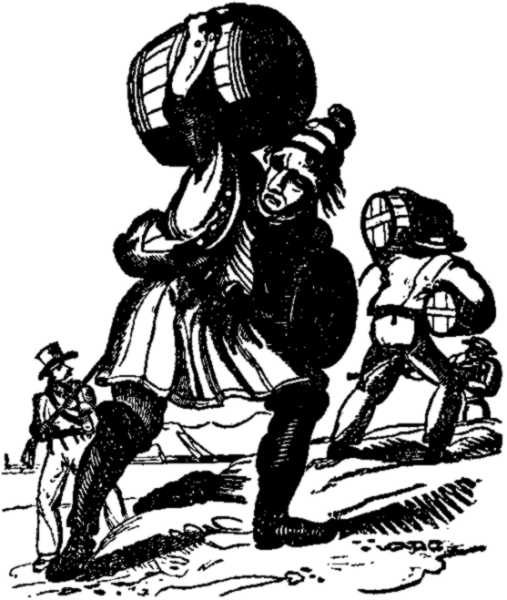
On October 12th every year in the 1980s kids in America heard some rendition of the same story. Christopher Columbus wanted to find the Atlantic route to the East Indies and India. It was there that spices existed in abundance.
Someone would inevitably raise their hand. Why would they go there? The teacher would answer smugly, Spices? You mean like salt and pepper? The teacher would pop on a coy smile, for this is what she’d been hoping for all along. Yes. That’s right. Spices like pepper and cinnamon were very difficult to find in Europe, so explorers wanted to find routes to the Spice Islands and India so they could get a source of these spices for themselves.
Wow, we said. Then she would really blow our minds by telling us how a bag of cinnamon might be worth the equivalent of $50,000 in today’s money. We oohed and aahed and the less bright of those children planned a pantry raid on his parents’ spice rack later that day (to the great permanently-damaging joy of his parents).
Why would he undertake such a dangerous voyage just for spices? Well, glad you asked, this was the age of exploration, you see, when things like the sextant and the magnetic compass allowed brave men to veer away from the coasts into the open waters of the ocean, find new worlds, and then kill all of the people they found there.
The story would then head back to Chris Columbus and the simple facts we learn as kids. He discovered America. He was smart – he thought the world was round when nobody else did! But he thought it was much smaller that it was, so he also thought the Caribbean was India (oh did we mock him for that). And, plus, we erroneously call Native Americans Indians because of that last bit. Since this was the 1980s, we continued to call the Native Americans Indians without much compunction, but our little developing brains had just begun trying to link India and the people who had lived in America. Thus in one day at school, we were on one hand taught to admire Christopher Columbus and to make fun of him for not understanding geography the way a bunch of fourth graders did.
Naturally what was left our of the class was the devastating effects Columbus would have both directly and indirectly on the New World he had come upon. What we couldn’t understand was the globe-altering changes that would occur as Columbus and his European backers wrought slavery, sickness, and destruction unto an entire peoples who were just minding their own business. Aside from Columbus’ deliberate, though not necessarily unusual for the time, cruelty towards the natives he found, Columbus brought something along with him on his voyage that would have an everlasting effect on the globe. Sugarcane.
When Columbus arrived in the New World he realized it was fecking hot. But he was an Italian who hung out in Spain, so it probably didn’t bother him too much. What’s more, he realized that it was a perfect climate in which to grow sugarcane. Sugarcane just like its spicey comrades was in high demand in Europe. It was rare, exotic, and made their drinks taste like not shit. So when Columbus got to the steamy Americas he thought ‘well, I can make some money here.’ And on his 1493 voyage back, he brought sugarcane to Hispaniola.
This changed the globe. Sugar mills were soon rampant in the Americas and then sugar plantations and then wars between European powers over sugar production. To the natives who lived there, this brought in generations of oppression, slavery, and murder. What peoples weren’t put to work, died of disease brought by Columbus, his men, and others who followed. It’s estimated that 60 years after Columbus arrived in the Americas, a population of 250,000 indigenous people was down to a few hundred. The rest succumbed to disease and murder. It is a nightmare that is almost impossible to comprehend, but Europeans really liked sugar, so that explains that.
If you know any of your world history, you know that sugarcane and its by-products became one of the main pillars of the awful triangular trade that reshaped the new world order. This trade was between the Americas, Europe, and Africa. And the Africans weren’t contributing beads and shell necklaces to the trade. The slaves taken there were sold off to sugar plantations to produce more sugar for Europe and the colonies in North America.
No by-product was as important to this trade as rum. And it was apparently plantation slaves on the island of Nevis who realized they could ferment molasses because it had just enough sugar to create alcohol. Though this alcohol was not good, it was called kill-devil, the slaves drank it in abundance, which is understandable since they had recently been made slaves for no good reason. Unfortunately, in discovering this by-product, they had indirectly made their captures more wealthy and their lives more difficult.
Rum grew. Big time. It became the favored drink of explorers, sailors, colonists in America, pirates, and people who wanted to be really, really drunk in a really, really short time (i.e. everyone). Rum was harsh and bitter, which is why people added lemon, juice, and spices to it. This is the precursor of the early rum punches and the ancestor of the rum and coke. Today, if you are celebrating rum, and not, let me be clear, Christopher Columbus, I suggest doing it with Martha Washington’s recipe, good old rum punch, or make your life easy and do a rum and coke.
